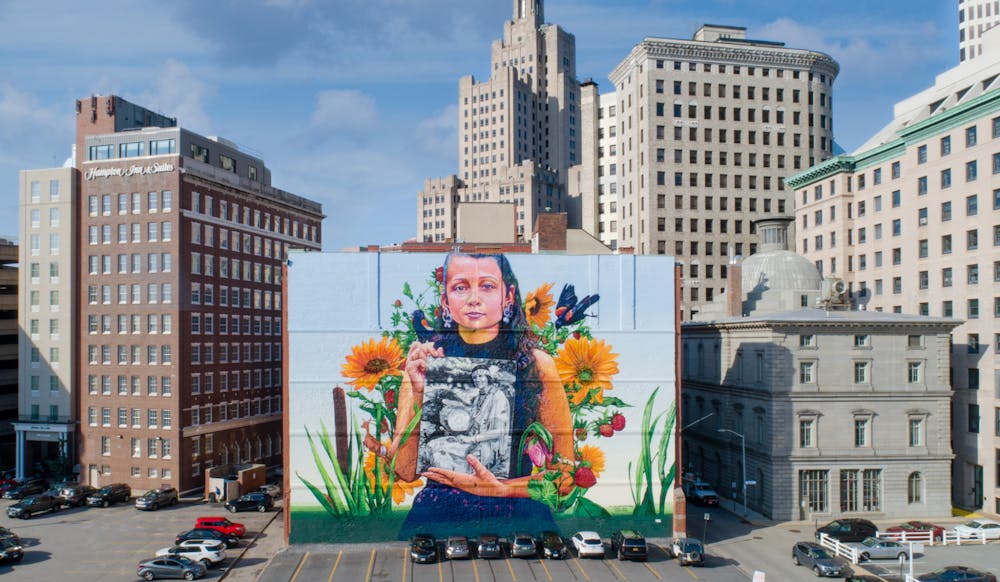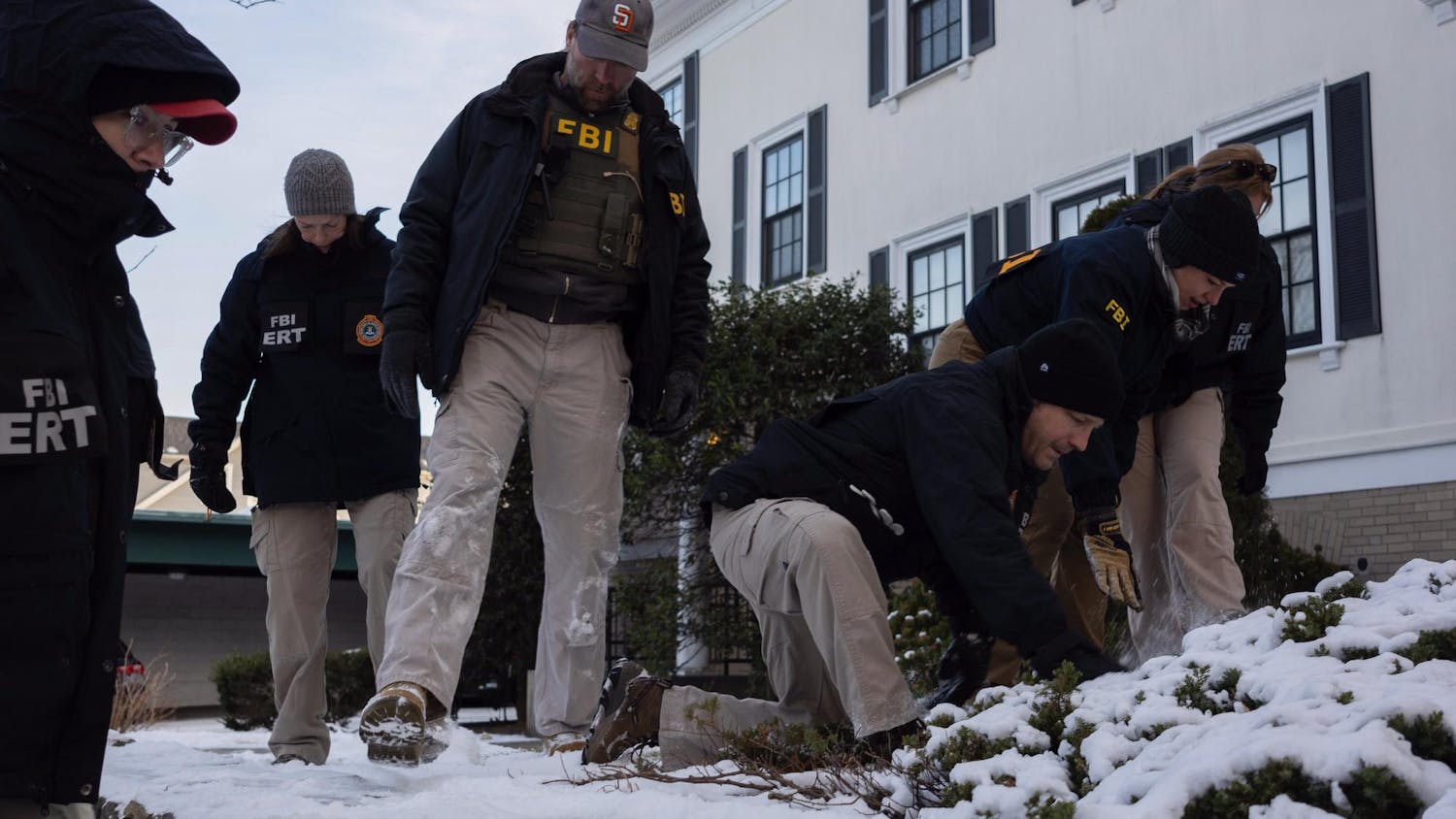Down College Hill and across the Providence River stands a large brick wall, home to a mural that has become an integral part of Downtown Providence. The mural depicts a contemporary Narragansett woman holding a portrait of her tribal elder, surrounded by vivid and deeply symbolic imagery of native flora.
Painted by Baltimore-based muralist and street artist Gaia in 2018, the work is called “Still Here” and represents the “Indigenous presence still here contemporaneously in this country,” Gaia told The Herald. The process of painting the mural took exactly 14 days, he added.
While working on the mural, Gaia collaborated with Nicholas Platzer, mural program manager for The Avenue Concept, the organization responsible for commissioning several major Providence murals.
Gaia asked Platzer to dig up information about the location of the wall and its history, Platzer told The Herald. Platzer then went through archives at the Providence Preservation Society to uncover information about the building that used to stand there, and Gaia noticed that most of the historical documentation available was centered around “white European male settlers,” Platzer said.
“The history of our location extends well beyond that,” he added. “There's no real written history of what actually happened on that site before any of these European male settlers arrived.” This drove Gaia to pay tribute to Indigenous people who have “been on that location and on that site hundreds and hundreds of years longer than any of these people,” Platzer explained.
Gaia said that an “80 by 100 foot wall smack-dab in the middle of downtown” was a “real opportunity” to make a statement about Indigenous presence in the city.
Once they began to examine the history of the area, Gaia and Platzer also discovered that Weybosset Street — which runs close to the mural — was once a “natural trail” that “Indigenous tribes used to follow that would lead them to the mouth of the river,” Platzer said.
Weybosset Street is one of the only streets downtown that does not run in a straight line but rather “zigzags,” he added. A spot by the mouth of the river, which is close to the location of the mural, was “one of the original trading points for multiple tribes” from around Rhode Island.
Discovering this connection was a beautiful moment, Platzer said, especially because so much of what they learned was through conversations with Indigenous communities and wasn’t information found in textbooks.
“That’s stuff you only learn when you’re really entrenched in this and talking to people who know what’s going on,” he said.
Gaia also emphasized the importance of conveying that “these people are present among us, they are not relegated to the past.” This is why Lynsea Montanari, a Rhode Island-based activist and educator whose portrait is in the mural, is pictured in contemporary clothing rather than traditional garb, Gaia said.
Wearing “modern clothing” was Montanari’s idea and was especially important to her because “that is a representation of who we are today,” she said in an interview with The Herald. “If people look up and see me in my regalia, they are going to put me into a past tense even though I'm a modern person.”
“I wanted to play with perception,” Gaia added. Montanari is also seen holding a black-and-white portrait of a tribal elder, Wampanoag and Narragansett leader Princess Red Wing, which highlights the rich “duality” of the contemporary and traditional, he said.
Platzer said Montanari’s background as a Narragansett activist and educator made her “the perfect candidate.” Lorén Spears, executive director of the Tomaquag Museum, recommended Montanari for the mural. Spears was not available for comment by press time.
Both Gaia and Platzer emphasized that the mural aims to represent not just Montanari but an entire community, a sentiment Montanari echoed. “More exciting than seeing my face on the mural is seeing the visibility that it brings to our communities,” she said.
Being able to represent her community is “really exciting” to Montanari, who said she “didn’t always feel like (she) was Indigenous enough” growing up due to internalized perceptions of what Indigenous people should look like. It’s exciting for the “young, insecure kid” in her to be a figure of Indigenous representation, she said.
Now, she added, she’s proud of who she is and does not let stereotypes define her.
Montanari’s family performed a blessing at the site of the mural once it was complete. “Hearing the drumming in that cavernous downtown that has been built on the wetlands, it was very powerful,” Gaia said. “I think it was a good alliance.”
“From an artistic perspective, I can't think of a better billboard for decolonization or for thinking about our past, our future and our contributions to democracy,” as well as diverse histories, he added.
Platzer also emphasized the importance of representation. “For Indigenous people to be able to look up and see themselves represented on this wall,” he said, “I knew (that) was going to be hugely significant and important.”
“So many times people tell me they’ve never met an Indigenous person, and I truly believe that’s because they don’t know what Indigenous people look like,” Montanari said. “That Indigenous people look like everyone else, and we go to Walmart and we go to school, we’re in your classrooms and we’re at your jobs.”
“We are still here,” she emphasized.





